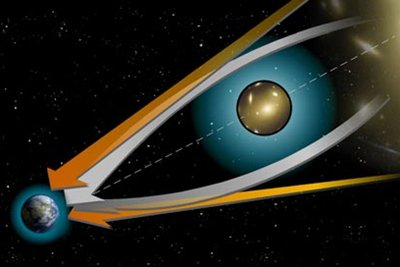 The stars you see at night can possibly be illusions, or that they are not as many as they actually are. This happens through a process called gravitational lens or gravitational lensing. It is also one of the consequences of Albert Einstein's general theory of relativity.
The stars you see at night can possibly be illusions, or that they are not as many as they actually are. This happens through a process called gravitational lens or gravitational lensing. It is also one of the consequences of Albert Einstein's general theory of relativity.
A celestial object, for example a quasar, that is far from Earth is prone to gravitational lensing. If there is another object, with a large mass, between the quasar and Earth, such as a globular cluster, then the globular cluster's gravitational field will bend the light sent by the quasar to the Earth. This is called the gravitational lens or gravitational lensing, and then one can see multiple images of that quasar. So what one sees at the sky at night can probably be an illusion.
There gravitational lensing has three different classes: strong lensing, when the distortions can be easily detected; weak lensing, when distortions are smaller and can only be detected by analyzing stars; and microlensing, when the light of an object is distorted, producing multiple images.
In 1937, scientist Fritz Zwicky postulated that big objects such as globular clusters or galaxy clusters can act as gravitational lenses. But it wasn't confirmed until 1979, when the so-called ‘Twin QSO' SBS 0957+561 was observed.
